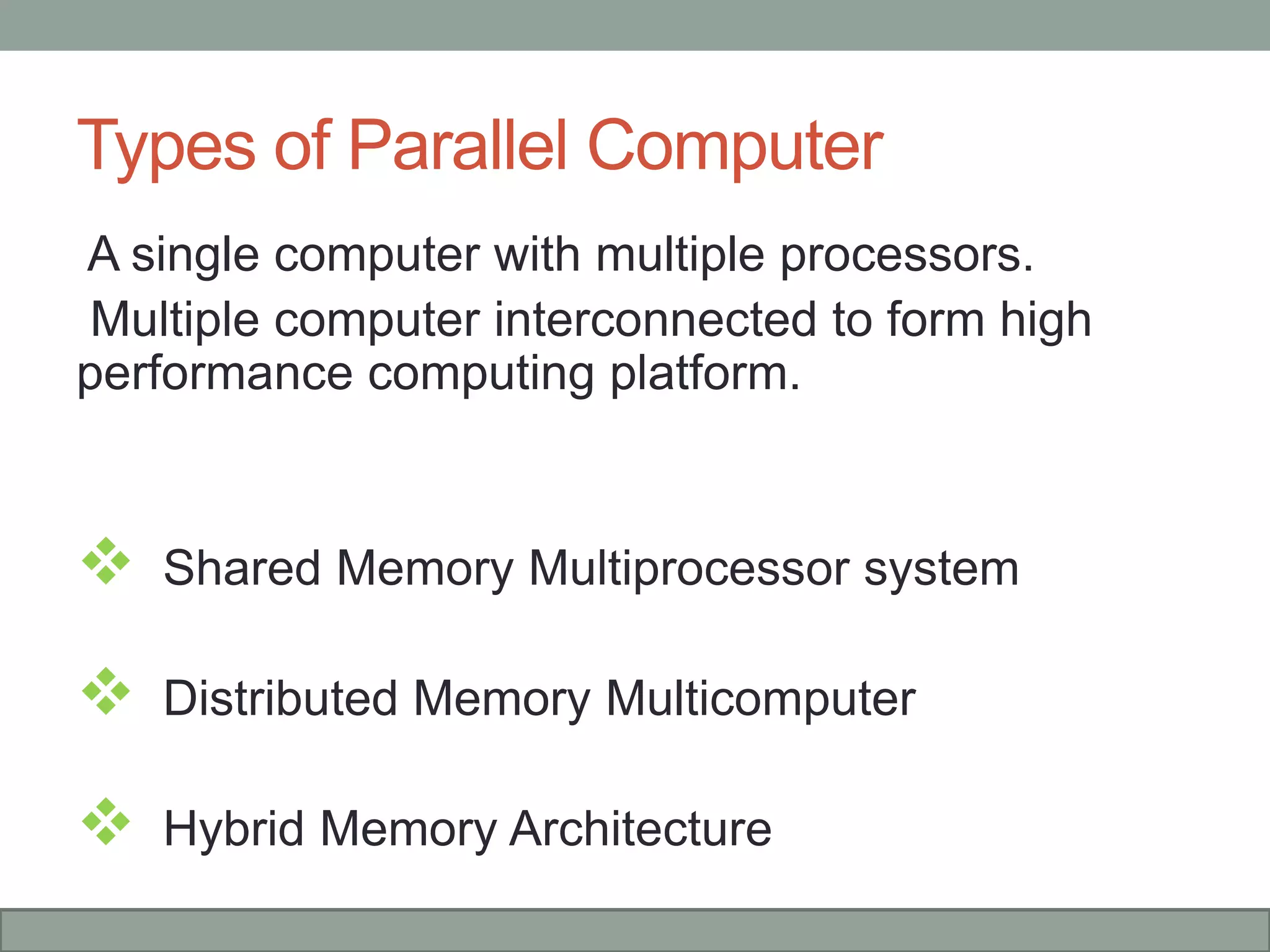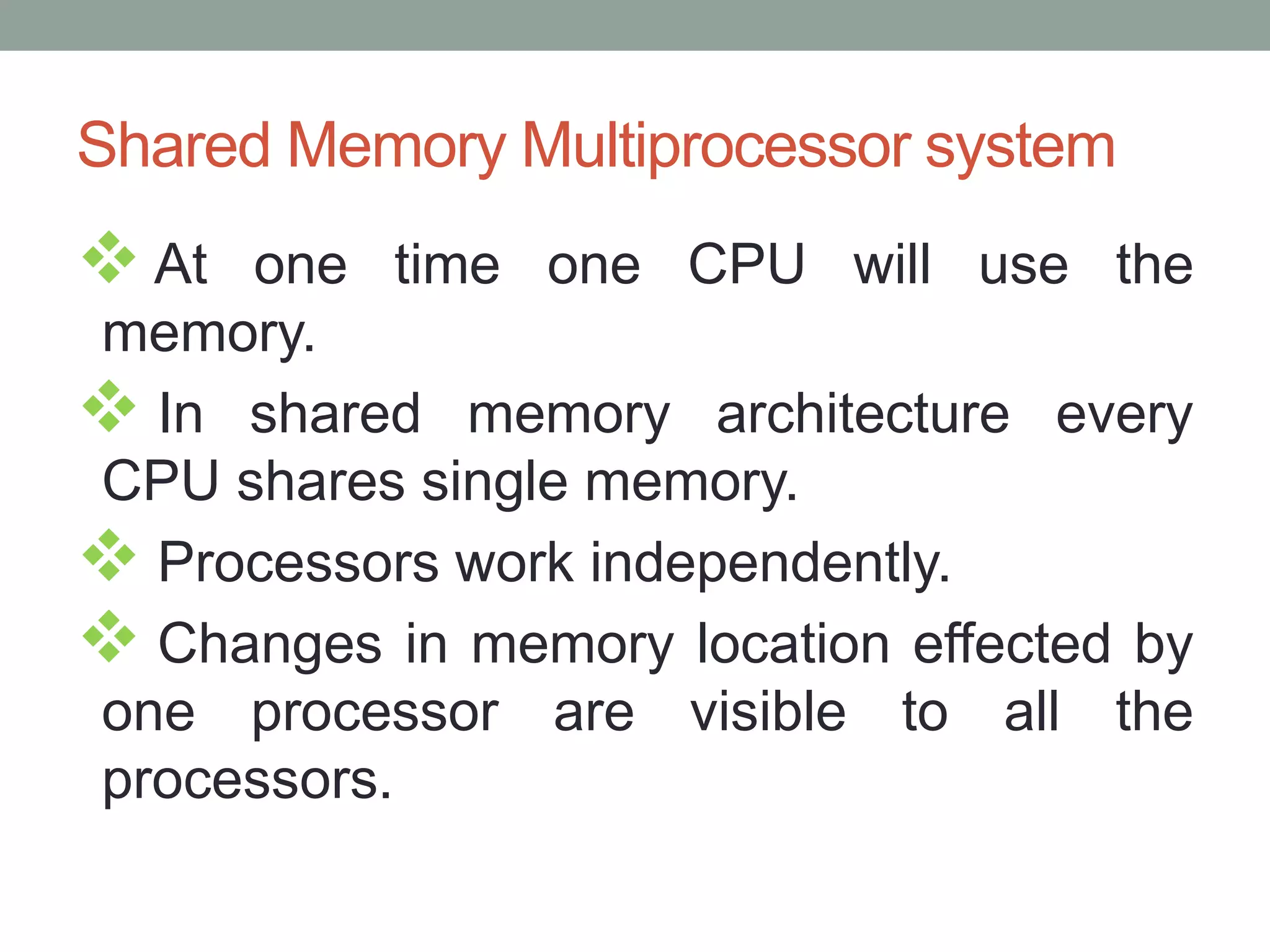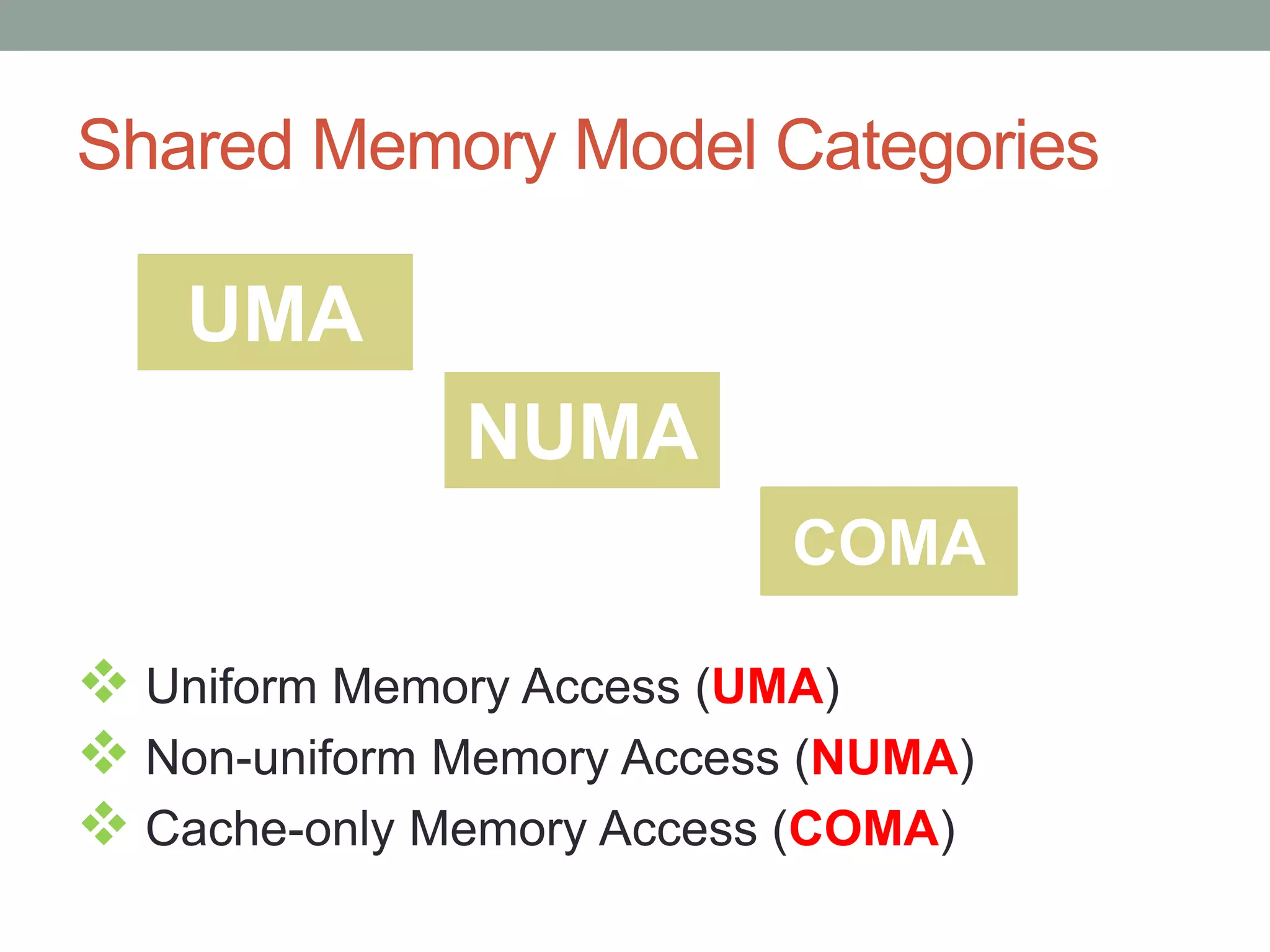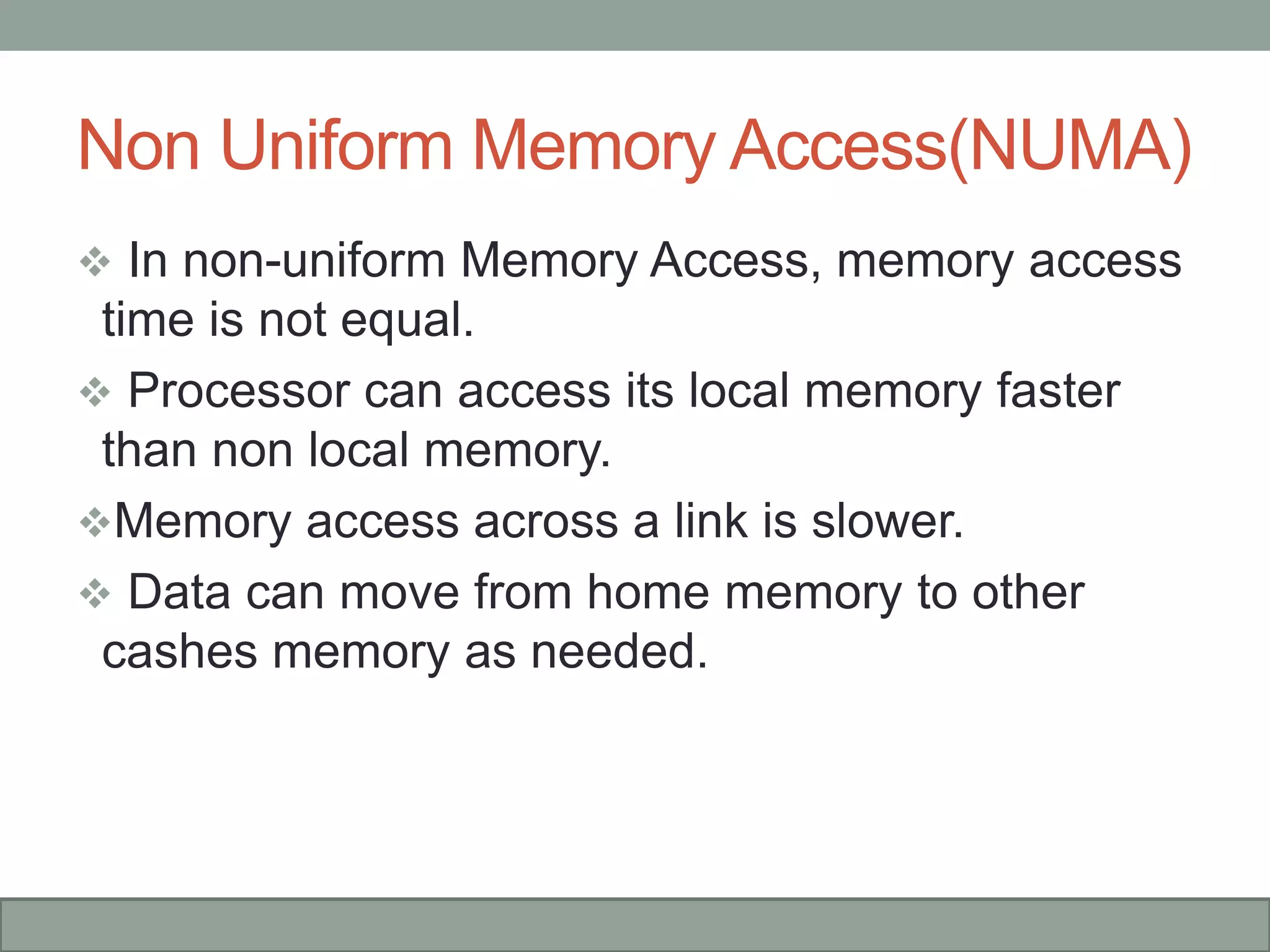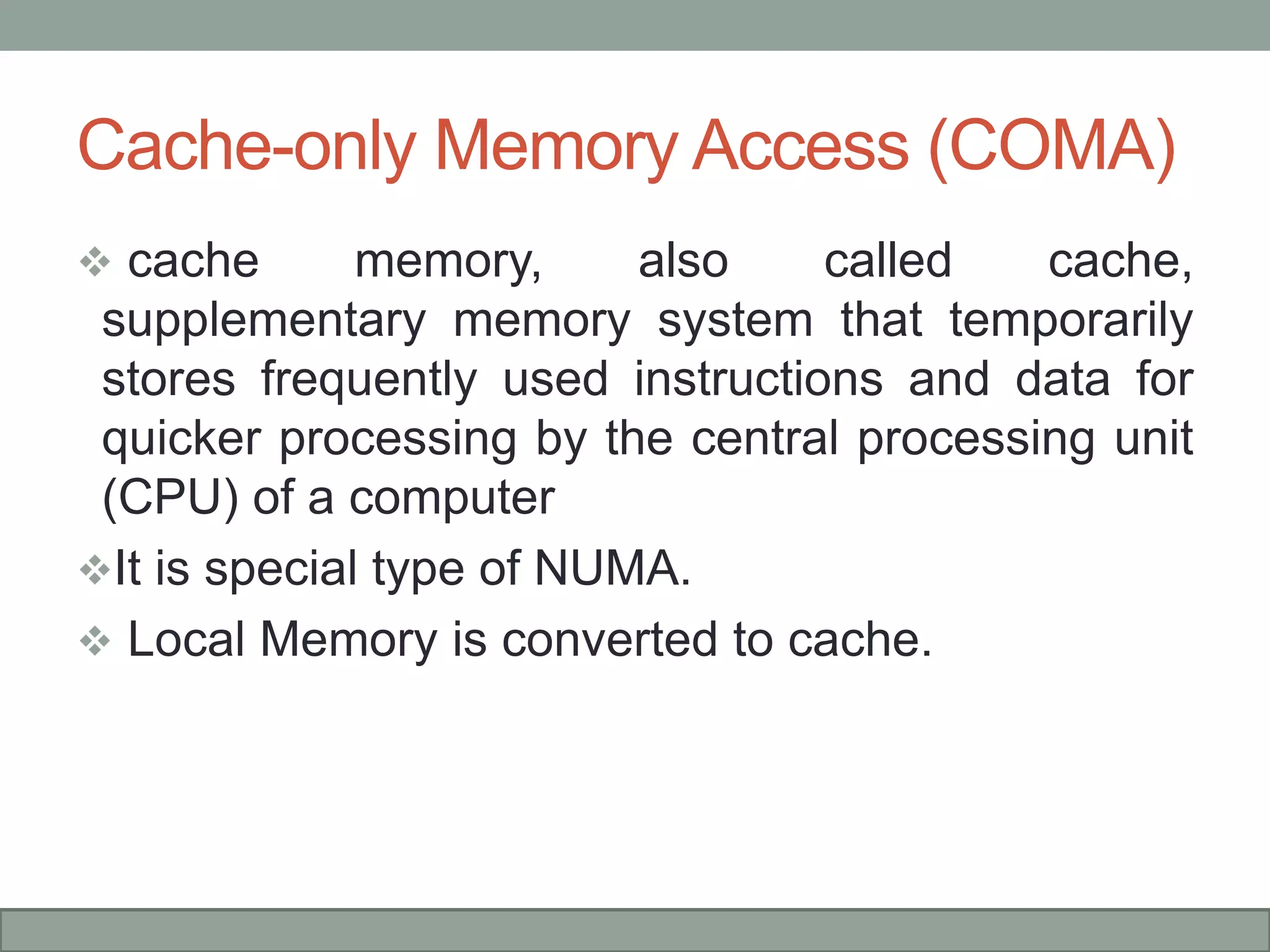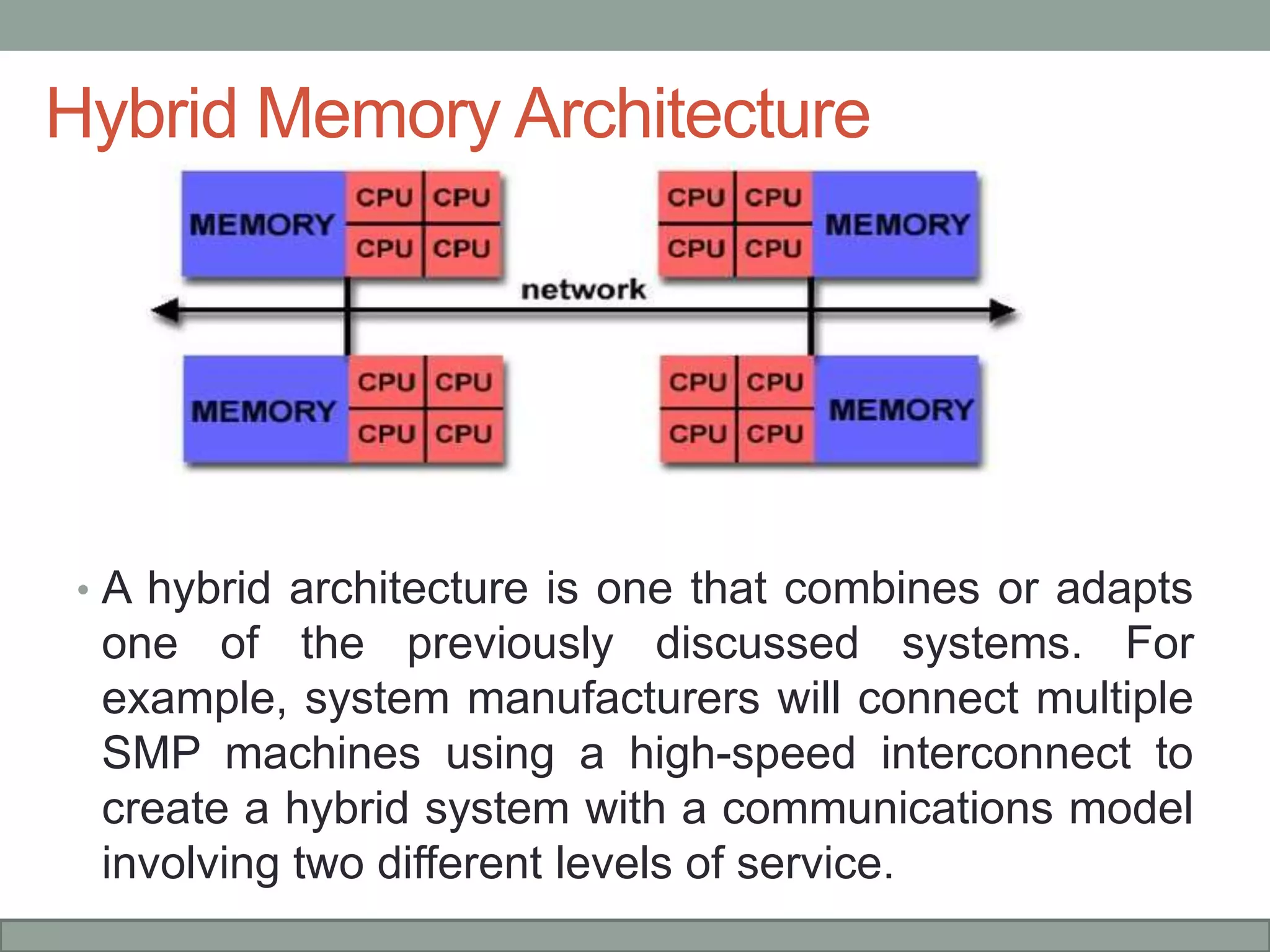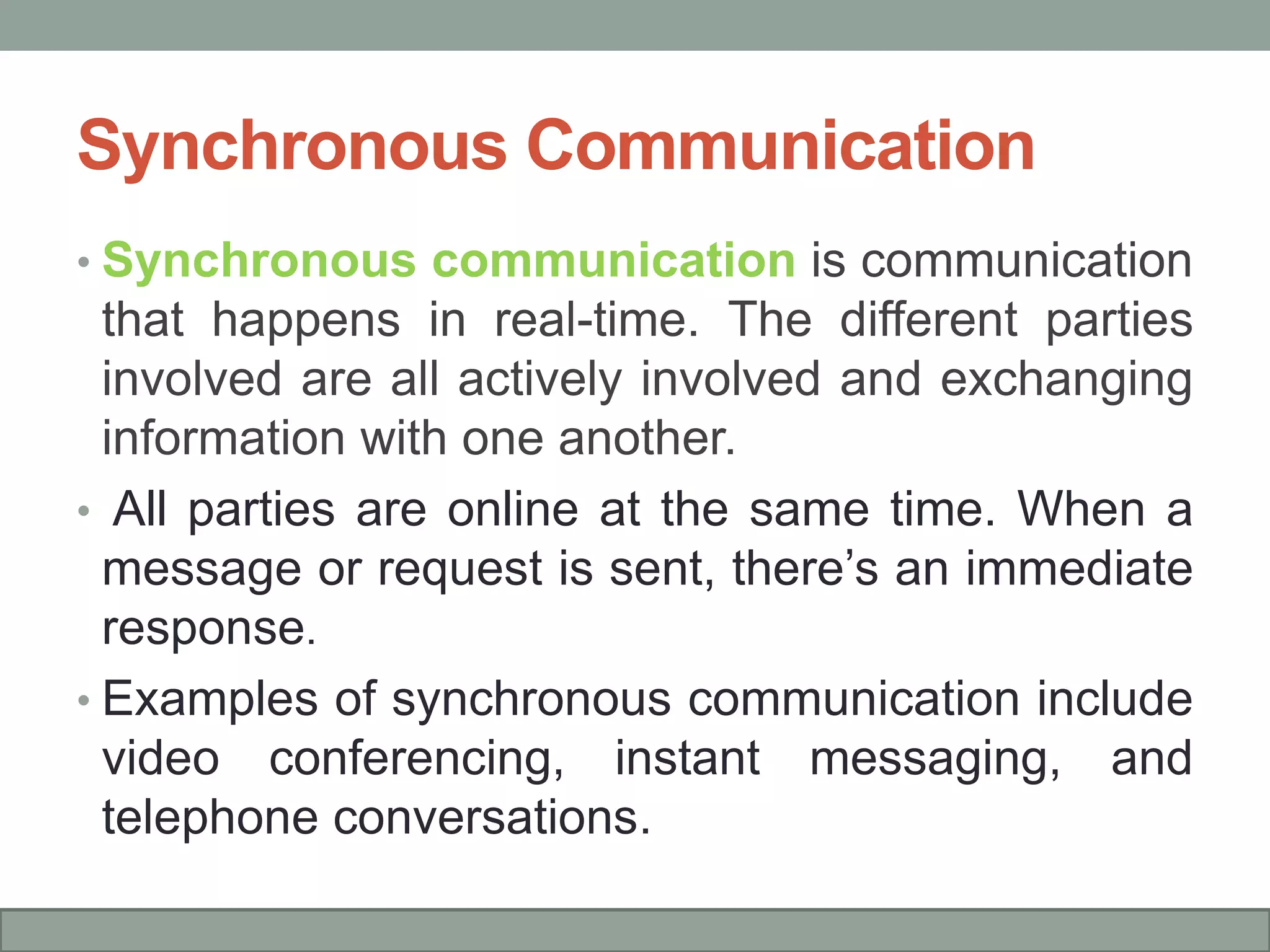This document discusses types of parallel and distributed computing systems. It describes shared memory multiprocessor systems which can have uniform memory access (UMA) with the same memory access time for all processors, or non-uniform memory access (NUMA) where memory access times differ. Distributed memory systems have independent nodes that communicate through message passing, while hybrid systems combine aspects of shared and distributed memory architectures. Synchronous communication occurs in real-time while asynchronous allows non-simultaneous engagement.

